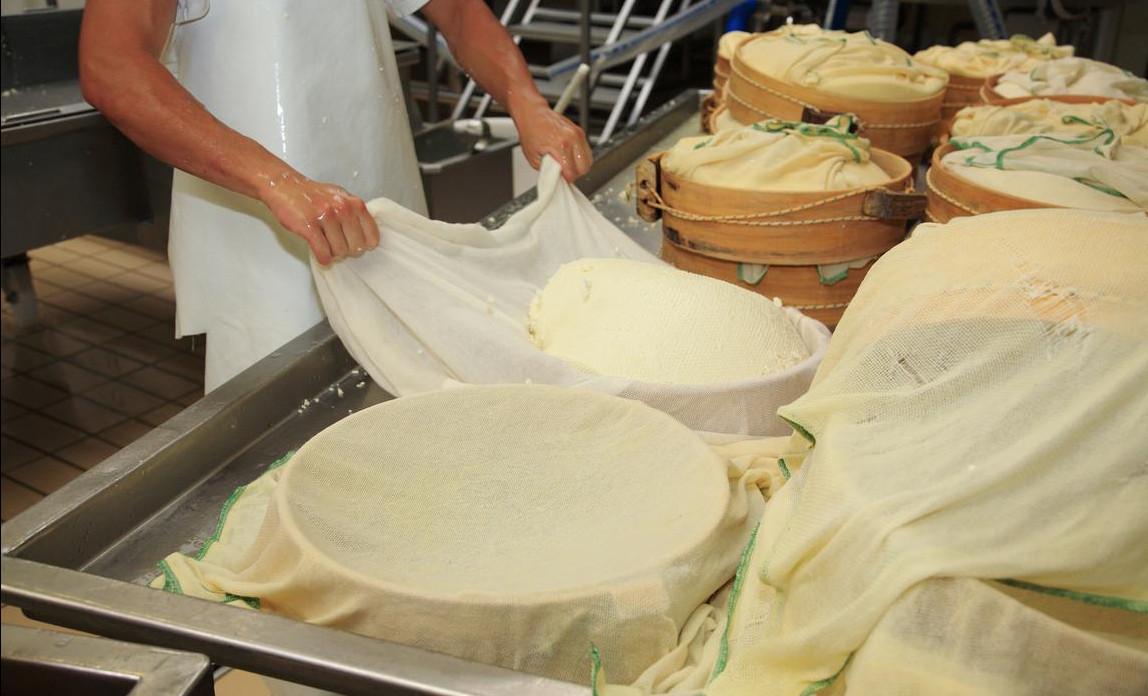Cheese Makers Melbourne: Crafting the Finest Cheeses In Your Area
Wiki Article
Understanding the Science Behind Cheese Production: From Milk Choice to Last Product
The complex process of cheese production begins with the mindful option of milk, a choice that greatly influences the final product's flavor and texture. Understanding the critical role of bacteria in fermentation reveals how these microorganisms transform lactose right into lactic acid, a vital ingredient in creating the cheese's character. cheese for sale online.Milk Option Refine
The selection of milk is a critical action in celebrity manufacturing procedure, as it straight influences the taste, texture, and quality of the last item. Different variables have to be taken into consideration throughout this selection, including the source of the milk, the type of the animals, and their diet regimen. Cow's milk, goat's milk, and sheep's milk each possess unique residential properties that contribute to the unique features of various cheese ranges.
Furthermore, the nutritional content of the milk, influenced by the pet's diet, can alter celebrity's last features. Top notch milk, sourced from healthy and balanced animals, ensures a superior cheese item, stressing the significance of rigid quality assurance procedures in the milk option procedure. Therefore, cautious factor to consider in milk choice is necessary for effective cheese manufacturing.

Function of Bacteria in Fermentation
Adhering to the mindful selection of milk, the fermentation process plays a crucial function in cheese production, where germs are introduced to transform the milk right into cheese. The main feature of these microorganisms is to transform lactose, the sugar existing in milk, into lactic acid. This acidification not just modifies the pH of the milk but also plays a crucial role in flavor advancement, texture, and conservation of the last product.Lactic acid bacteria (LABORATORY), such as Lactococcus and Streptococcus species, are generally used in cheese manufacturing because of their capacity to prosper in milk and their payment to the fermentation process. The metabolic activities of these microorganisms lead to the manufacturing of numerous metabolites, consisting of flavor compounds and antimicrobial materials, which hinder wasting organisms and pathogenic bacteria, thereby boosting cheese safety.
In addition, the fermentation process influences the general characteristics of celebrity, including its aroma, taste, and structure. Different strains of microorganisms can pass on distinctive flavors and contribute to the one-of-a-kind profiles of different cheese kinds. Hence, the choice of bacterial cultures is a crucial action in achieving the preferred cheese quality and consistency.
Coagulation and Curd Formation
In the cheese production procedure, coagulation marks a crucial transition from fluid milk to solid curds. This process is commonly complemented by the acidic atmosphere developed by lactic acid microorganisms, which better aids in coagulation by lowering the pH of the milk.The resulting curds are formed as the fluid whey starts to divide. Factors such as temperature, the amount of rennet made use of, and the moment permitted coagulation are vital in figuring out the texture and high quality of the curds. Greater temperature levels and longer coagulation times usually yield firmer curds, suitable for tougher cheeses.
When curds are developed, they are reduced into smaller items, enabling whey to get away extra efficiently. This action is essential, as it affects the moisture content and total features of the last cheese item. Proper monitoring of coagulation and curd formation is essential for attaining specific cheese styles and desired flavor profiles.
Aging and Flavor Development
After the curd has been created and whey has been drained, the next stage in cheese manufacturing is aging, likewise referred to as maturation. This vital procedure substantially influences the cheese's last taste, structure, and aroma. Throughout aging, numerous biochemical and microbiological improvements occur, impacting the total sensory account.The aging setting, consisting of temperature level and moisture, plays a crucial role in flavor advancement. Enzymes and germs existing in the cheese promote the break down of healthy proteins and fats into smaller sized molecules, causing the formation of amino acids, fats, and volatile substances. These improvements contribute to the intricacy of taste and scent, with unique profiles arising based on the certain cheese range.
Additionally, the period of aging is pivotal; shorter aging durations generally produce milder tastes, while longer maturation cause more robust and nuanced accounts. Aspects such as the milk resource, cheese type, and particular aging strategies even more enhance the diversity of tastes created. Ultimately, aging is a fragile equilibrium of time, ecological problems, and microbial task, culminating in the unique characteristics that define each cheese range.
Top Quality Control in Cheese Production
Ensuring high criteria throughout the cheese production process is important for providing a top quality item that meets customer expectations - cheese for sale online. Quality assurance (QC) incorporates various phases, beginning from raw milk option to the final aging procedure. Each phase needs meticulous attention to detail to protect against contamination and make sure uniformityThroughout milk option, producers should analyze aspects such as fat content, pH levels, and microbial high quality. Routine testing for somatic cell counts and microbial tons is important to make certain the milk's viability for cheese making. In the production stage, QC procedures consist of monitoring the temperature level, acidity, and rennet task, which dramatically affect texture and taste.
As cheese grows, continuous sensory evaluations and lab evaluations are performed to analyze flavor advancement, texture, and total quality. Any kind of inconsistencies from established criteria necessitate restorative activities to preserve product stability.
Additionally, paperwork and traceability are vital elements of effective quality assurance, making it possible for manufacturers to track celebrity from farm to customer. By applying robust QC procedures, cheese suppliers can not just boost item top quality yet additionally develop consumer trust, ensuring their place in a competitive market.

Conclusion
In conclusion, the scientific research of cheese production includes a number of important stages, each dramatically influencing the end product. The cautious choice of milk, the necessary function of bacteria in fermentation, the improvement of fluid milk right into curds cheese for sale online via coagulation, and the aging procedure collectively add to the growth of unique tastes and textures. Additionally, rigorous quality assurance measures ensure that each cheese range meets well established standards, therefore boosting customer fulfillment and keeping the integrity of the cheese-making practice.Report this wiki page